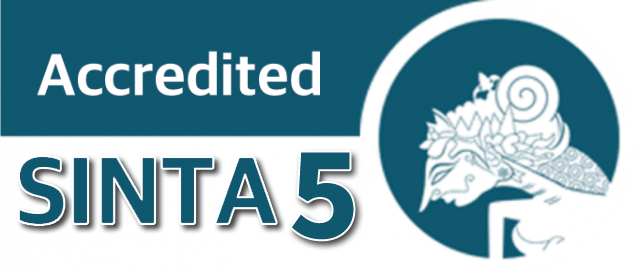Analisis Pengetahuan dan Keterampilan Tenaga Kesehatan tentang Perawatan Bayi dengan Metode Kangarro Mother Care (KMC)
Abstract
Background: Low birth weight (LBW) because they do not have a complete temperature to deal with environmental changes in the high temperature intra uterine and extra uterine environment, because cold temperatures can affect. The KMC method can reduce the risk of hypothermia because the heat from the mother's body provides heat to the baby's body by direct skin-to-skin contact and greatly facilitates the mother in giving breast milk (ASI) to the baby, strengthens the affectionate relationship between mother and baby and reduces time stay in hospital. Research (Uwaezuoke, 2017) on the effectiveness of the kangaroo method on LBW, shows that the kangaroo method can strengthen the relationship between mother and baby as well as a positive effect on infant weight. Babies born with LBW are caused by the process of losing body heat through: evaporation, radiation, conduction and convection, because of subcutaneous fat, brown fat, and less glycogen stray sites (Merenstein & Gardner, 2002).
Methods: This research has used quantitative research with a descriptive approach. Focus on nurses in the Perinatology nursing room, HNGV, Dili, Timor-Leste in March 2019.
Results: Using the criteria for the KMC method on newborns treated in the HNGV neonatology inpatient ward, analysis of 38 indicators for health workers who provide services to infants. The results of the study show that answering all the criteria is not correct with a minimum number of 3% and a maximum of 91%. On another aspect they need to answer that all the criteria are correct with the results showing a minimum of 6% and a maximum of 100%.
Conclusion: Hospitals (neonatology units) need to regularly hold special training related to KMC for health workers to improve and expand their knowledge.
References
Ariningsih, E. (2005) ‘KONSUMSI DAN KECUKUPAN ENERGI DAN PROTEIN RUMAH TANGGA PERDESAAN DI INDONESIA : ANALISIS DATA Consumption and Intake Adequacy of Calorie and Protein of’, Analysis, pp. 233–247.
Carducci, B. and Bhutta, Z. A. (2018) ‘Care of the growth-restricted newborn’, Best Practice and Research: Clinical Obstetrics and Gynaecology, 49, pp. 103–116. doi: 10.1016/j.bpobgyn.2018.02.003
DAHLAN, A. K. (2017) ‘ANALISIS PELAKSANAAN KANGAROO MOTHER CARE PADA BAYI BERAT LAHIR RENDAH DI RUMAH SAKIT UMUM SAWERIGADING KOTA PALOPO SULAWESI SELATAN’, Ekp, 13(3), pp. 1576–1580.
Sinaga, D., & Hallawa, E. (2020). Hubungan Umur dan Pendidikan dengan Pengetahuan Ibu tentang Persiapan Remaja dalam Menghadapi Menarche di Sekolah Dasar Negeri 101752 Klambir V Medan Tahun 2019. Elisabeth Health Jurnal, 5(1), 129-139. https://doi.org/10.52317/ehj.v5i1.297
Hodgman, J. E. et al. (2003) ‘Infection as a cause of death in the extremely-low-birth-weight infant’, Journal of Maternal-Fetal and Neonatal Medicine, 14(5), pp. 313–317. doi: 10.1080/jmf.14.5.313.317.
Meeting, N. (2018) ‘Regional meeting on reducing newborn mortality with a focus on birth’, pp. 1–48.
Merenstein, G. B, & Gardner, S.L (2002). Hand book of neonatal intensive care, (5thed), St. Louis Missouri: Mosby.
Notoatmodjo, S. (2003). Ilmu kesehatan masyarakat, prinsip-prinsip dasar. (cetakan I). Jakarta: Rineka Cipta
Uwaezuoke, S. (2017) ‘Kangaroo mother care in resource-limited settings: implementation, health benefits, and cost-effectiveness’, Research and Reports in Neonatology, Volume 7, pp. 11–18. doi: 10.2147/rrn.s138773












